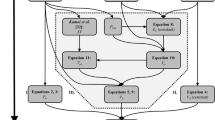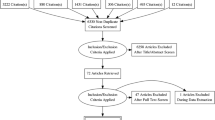Abstract
This paper develops a method for the minimally invasive, beat-by-beat estimation of the left ventricular pressure–volume loop. This method estimates the left ventricular pressure and volume waveforms that make up the pressure–volume loop using clinically available inputs supported by a short, baseline echocardiography reading. Validation was performed across 142,169 heartbeats of data from 11 Piétrain pigs subject to two distinct protocols encompassing sepsis, dobutamine administration and clinical interventions. The method effectively located pressure–volume loops, with low overall median errors in end-diastolic volume of 8.6%, end-systolic volume of 17.3%, systolic pressure of 19.4% and diastolic pressure of 6.5%. The method further demonstrated a low overall mean error of 23.2% predicting resulting stroke work, and high correlation coefficients along with a high percentage of trend compass ‘in band’ performance tracking changes in stroke work as patient condition varied. This set of results forms a body of evidence for the potential clinical utility of the method. While further validation in humans is required, the method has the potential to aid in clinical decision making across a range of clinical interventions and disease state disturbances by providing real-time, beat-to-beat, patient specific information at the intensive care unit bedside without requiring additional invasive instrumentation.








Similar content being viewed by others
References
Baan, J., and E. T. Van Der Velde. Sensitivity of left ventricular end-systolic pressure-volume relation to type of loading intervention in dogs. Circ. Res. 62:1247–1258, 1988.
Berry, M. F., T. J. Pirolli, V. Jayasankar, J. Burdick, K. J. Morine, T. J. Gardner, and Y. J. Woo. Apelin has in vivo inotropic effects on normal and failing hearts. Circulation 110:II-187–II-193, 2004.
Bland, J. M., and D. G. Altman. Statistical methods for assessing agreement between two methods of clinical measurement. Lancet 1:307–310, 1986.
Broscheit, J.-A., F. Weidemann, J. Strotmann, P. Steendijk, H. Karle, N. Roewer, and C.-A. Greim. Time-varying elastance concept applied to the relation of carotid arterial flow velocity and ventricular area. J. Cardiothorac. Vasc. Anesth. 20:340–346, 2006.
Burkhoff, D., P. P. De Tombe, and W. C. Hunter. Impact of ejection on magnitude and time course of ventricular pressure-generating capacity. Am. J. Physiol.-Heart Circ. Physiol. 265:H899–H909, 1993.
Burkhoff, D., and K. Sagawa. Ventricular efficiency predicted by an analytical model. Am. J. Physiol.-Regul. Integr. Comp. Physiol. 250:R1021–R1027, 1986.
Chatterjee, K. The swan-ganz catheters: past, present, and future a viewpoint. Circulation 119:147–152, 2009.
Chen, C.-H., B. Fetics, E. Nevo, C. E. Rochitte, K.-R. Chiou, P.-A. Ding, M. Kawaguchi, and D. A. Kass. Noninvasive single-beat determination of left ventricular end-systolic elastance in humans. J. Am. Coll. Cardiol. 38:2028–2034, 2001.
Cousins, T. R., and J. M. O’Donnell. Arterial cannulation: a critical review. AANA J. 72(4):267–271, 2004.
Davidson S., C. Pretty, S. Kamoi, J. Balmer, T. Desaive and J. Chase. Real-time, minimally invasive, beat-to-beat estimation of end-systolic volume using a modified end-systolic pressure–volume relation. The 20th World Congress of the International Federation of Automatic Control, 9–14 July 2017.
Davidson, S., C. Pretty, A. Pironet, T. Desaive, N. Janssen, B. Lambermont, P. Morimont, and J. G. Chase. Minimally invasive estimation of ventricular dead space volume through use of Frank-Starling curves. PloS ONE 12:e0176302, 2017.
Davidson, S., C. Pretty, A. Pironet, S. Kamoi, J. Balmer, T. Desaive, and J. G. Chase. Minimally invasive, patient specific, beat-by-beat estimation of left ventricular time varying elastance. Biomed. Eng. Online 16:42, 2017.
Dellinger, R. P., M. M. Levy, J. M. Carlet, J. Bion, M. M. Parker, R. Jaeschke, K. Reinhart, D. C. Angus, C. Brun-Buisson, and R. Beale. Surviving Sepsis Campaign: international guidelines for management of severe sepsis and septic shock: 2008. Intensive Care Med. 34:17–60, 2008.
Ferrandis, M.-J., I. Ryden, T. L. Lindahl, and A. Larsson. Ruling out cardiac failure: cost-benefit analysis of a sequential testing strategy with NT-proBNP before echocardiography. Upsala J. Med. Sci. 118:75–79, 2013.
Frazier, S. K., and G. J. Skinner. Pulmonary artery catheters: state of the controversy. J. Cardiovasc. Nurs. 23:113–121, 2008.
Gershengorn, H. B., A. Garland, A. Kramer, D. C. Scales, G. Rubenfeld, and H. Wunsch. Variation of arterial and central venous catheter use in United States intensive care units. J. Am. Soc. Anesthesiol. 120:650–664, 2014.
Gershengorn, H. B., H. Wunsch, D. C. Scales, R. Zarychanski, G. Rubenfeld, and A. Garland. Association between arterial catheter use and hospital mortality in intensive care units. JAMA Intern. Med. 174:1746–1754, 2014.
Glower, D. D., J. A. Spratt, N. D. Snow, J. S. Kabas, J. W. Davis, C. Olsen, G. Tyson, D. Sabiston, and J. Rankin. Linearity of the Frank-Starling relationship in the intact heart: the concept of preload recruitable stroke work. Circulation 71:994–1009, 1985.
Hall, J. E. Guyton and Hall Textbook Of Medical Physiology. Philadelphia: Elsevier Health Sciences, 2010.
Jardin, F., J.-C. Farcot, L. Boisante, N. Curien, A. Margairaz, and J.-P. Bourdarias. Influence of positive end-expiratory pressure on left ventricular performance. N. Engl. J. Med. 304:387–392, 1981.
Kamoi, S., C. Pretty, J. Balmer, S. Davidson, A. Pironet, T. Desaive, G. M. Shaw, and J. G. Chase. Improved pressure contour analysis for estimating cardiac stroke volume using pulse wave velocity measurement. Biomed. Eng. Online 16:51, 2017.
Kamoi, S., C. Pretty, P. Docherty, D. Squire, J. Revie, Y. S. Chiew, T. Desaive, G. M. Shaw, and J. G. Chase. Continuous stroke volume estimation from aortic pressure using zero dimensional cardiovascular model: proof of concept study from porcine experiments. PloS ONE 9:e102476, 2014.
Karunanithi, M. K., and M. P. Feneley. Single-beat determination of preload recruitable stroke work relationship: derivation and evaluation in conscious dogs. J. Am. Coll. Cardiol. 35:502–513, 2000.
Kastrup, M., A. Markewitz, C. Spies, M. Carl, J. Erb, J. Grosse, and U. Schirmer. Current practice of hemodynamic monitoring and vasopressor and inotropic therapy in post-operative cardiac surgery patients in Germany: results from a postal survey. Acta Anaesthesiol. Scand. 51:347–358, 2007.
Klabunde, R. Cardiovascular Physiology Concepts. Philadelphia: Lippincott Williams & Wilkins, 2011.
Klotz, S., I. Hay, M. L. Dickstein, G.-H. Yi, J. Wang, M. S. Maurer, D. A. Kass, and D. Burkhoff. Single-beat estimation of end-diastolic pressure-volume relationship: a novel method with potential for noninvasive application. Am. J. Physiol.-Heart Circ. Physiol. 291:H403–H412, 2006.
Lee, W.-S., W.-P. Huang, W.-C. Yu, K.-R. Chiou, P. Y.-A. Ding, and C.-H. Chen. Estimation of preload recruitable stroke work relationship by a single-beat technique in humans. Am. J. Physiol.-Heart Circ. Physiol. 284:H744–H750, 2003.
Lee Rodgers, J., and W. A. Nicewander. Thirteen ways to look at the correlation coefficient. Am. Stat. 42:59–66, 1988.
Lips, D. J., T. vd Nagel, P. Steendijk, M. Palmen, B. J. Janssen, J.-M. Dantzig, L. J. de Windt, P. A. Doevendans, and D. J. Lips. Left ventricular pressure–volume measurements in mice: comparison of closed–chest versus open–chest approach. Basic Res. Cardiol. 99:351–359, 2004.
Malm, S., S. Frigstad, E. Sagberg, H. Larsson, and T. Skjaerpe. Accurate and reproducible measurement of left ventricular volume and ejection fraction by contrast echocardiography. J. Am. Coll. Cardiol. 44:1030–1035, 2004.
Mozaffarian, D., E. J. Benjamin, A. S. Go, D. K. Arnett, M. J. Blaha, M. Cushman, S. R. Das, S. de Ferranti, J.-P. Després, and H. J. Fullerton. Heart disease and stroke statistics—2016 update. Circulation 133:e38–e360, 2016.
Nguyen, H. B., E. P. Rivers, F. M. Abrahamian, G. J. Moran, E. Abraham, S. Trzeciak, D. T. Huang, T. Osborn, D. Stevens, and D. A. Talan. Severe sepsis and septic shock: review of the literature and emergency department management guidelines. Ann. Emerg. Medicine 48:54, 2006.
Pironet, A., P. C. Dauby, J. G. Chase, S. Kamoi, N. Janssen, P. Morimont, B. Lambermont, and T. Desaive. Model-based stressed blood volume is an index of fluid responsiveness** This work was supported by the French Community of Belgium, the Belgian Funds for Scientific Research (FRS-FNRS) and EU Marie Curie actions (FP7-PEOPLE-2012-IRSES). IFAC-PapersOnLine 48:291–296, 2015.
Sagawa, K. Editorial: the end-systolic pressure-volume relation of the ventricle: definition, modifications and clinical use. Circulation 63:1223–1227, 1981.
Schiller, N. B., H. Acquatella, T. A. Ports, D. Drew, J. Goerke, H. Ringertz, N. H. Silverman, B. Brundage, E. H. Botvinick, and R. Boswell. Left ventricular volume from paired biplane two-dimensional echocardiography. Circulation 60:547–555, 1979.
Senzaki, H., C.-H. Chen, and D. A. Kass. Single-beat estimation of end-systolic pressure-volume relation in humans a new method with the potential for noninvasive application. Circulation 94:2497–2506, 1996.
Signal, M., R. Gottlieb, A. Le Compte, and J. G. Chase. Continuous glucose monitoring and trend accuracy: NEWS about a trend compass. J. Diab. Sci. Technol. 8:986–997, 2014.
Stevenson, D., J. Revie, J. G. Chase, C. E. Hann, G. M. Shaw, B. Lambermont, A. Ghuysen, P. Kolh, and T. Desaive. Algorithmic processing of pressure waveforms to facilitate estimation of cardiac elastance. Biomed. Eng. Online 11:1–16, 2012.
Stevenson, D., J. Revie, J. G. Chase, C. E. Hann, G. M. Shaw, B. Lambermont, A. Ghuysen, P. Kolh, and T. Desaive. Beat-to-beat estimation of the continuous left and right cardiac elastance from metrics commonly available in clinical settings. Biomed. Eng. Online 11:73, 2012.
Suga, H. Ventricular energetics. Physiol. Rev. 70:247–277, 1990.
Suga, H., K. Sagawa, and A. A. Shoukas. Load independence of the instantaneous pressure-volume ratio of the canine left ventricle and effects of epinephrine and heart rate on the ratio. Circ. Res. 32:314–322, 1973.
van Hout, G. P., S. J. Jansen, J. M. Gho, P. A. Doevendans, W. W. van Solinge, G. Pasterkamp, S. A. Chamuleau, and I. E. Hoefer. Admittance-based pressure–volume loops versus gold standard cardiac magnetic resonance imaging in a porcine model of myocardial infarction. Physiol. Rep. 2:e00287, 2014.
Vieillard-Baron, A., M. Slama, B. Cholley, G. Janvier, and P. Vignon. Echocardiography in the intensive care unit: from evolution to revolution? Intensive Care Med. 34:243–249, 2008.
Vincent, J.-L., and H. Gerlach. Fluid resuscitation in severe sepsis and septic shock: an evidence-based review. Crit. Care Med. 32:S451–S454, 2004.
Acknowledgments
No benefits in any form have been or will be received from a commercial party related directly or indirectly to the subject of this manuscript.
Author information
Authors and Affiliations
Corresponding author
Additional information
Associate Editor Elena S. Di Martino oversaw the review of this article.
Rights and permissions
About this article
Cite this article
Davidson, S., Pretty, C., Kamoi, S. et al. Beat-by-Beat Estimation of the Left Ventricular Pressure–Volume Loop Under Clinical Conditions. Ann Biomed Eng 46, 171–185 (2018). https://doi.org/10.1007/s10439-017-1947-9
Received:
Accepted:
Published:
Issue Date:
DOI: https://doi.org/10.1007/s10439-017-1947-9




